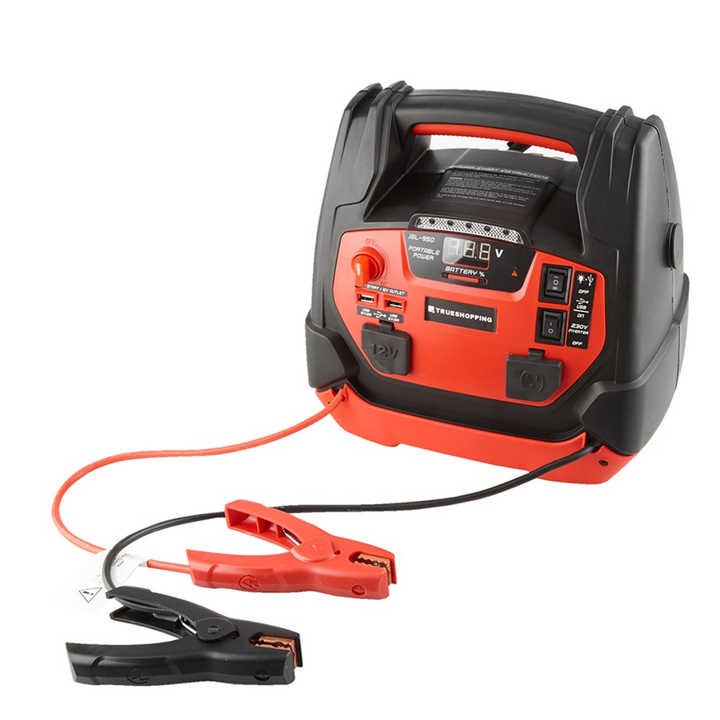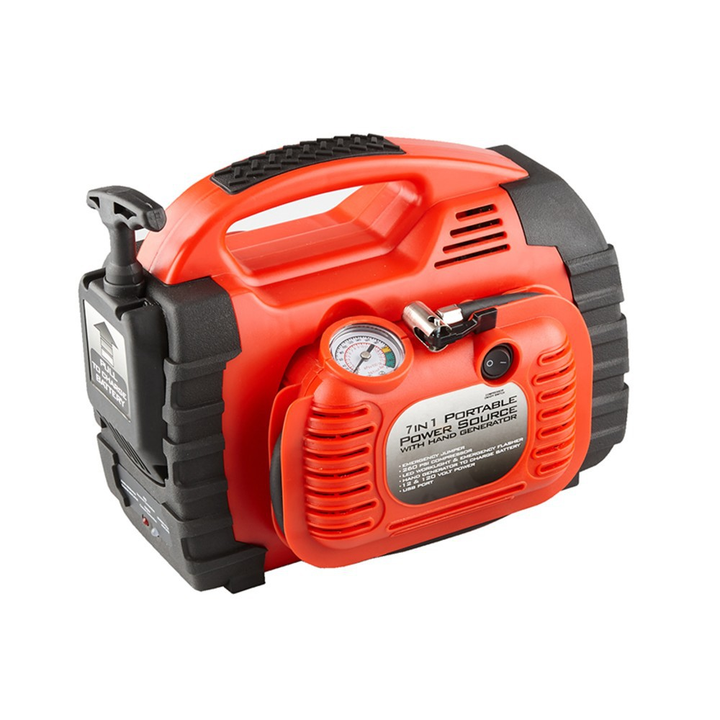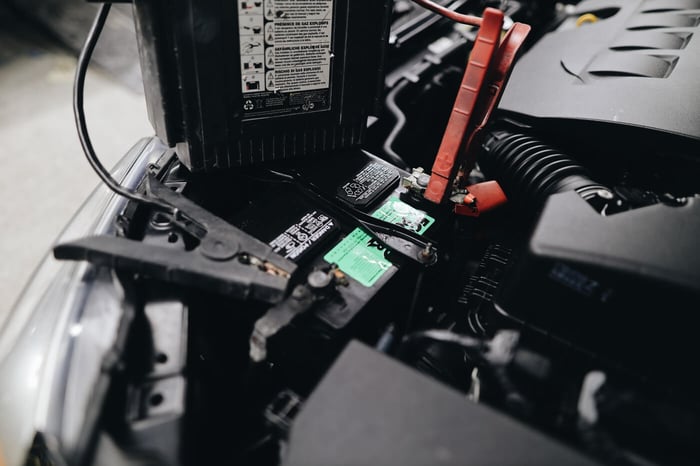Resurrect your dead car battery with a portable jump starter.
Batteries lose their charges over time; the one in your vehicle is no exception. Not only can it be frustrating but also terrifying. This is especially true in hopeless situations, such as a dead car battery in the middle of nowhere.
A common trope in horror movies, you wouldn’t want to be the star of that story. What you need is basic preparation with must-have equipment, a.k.a. a portable battery booster.
Car Battery Power Maintenance

(Image Credit: Public Domain Pictures)
On average, car batteries last up to three to five years. Factors like cold weather and the driving routine can affect their lifespan.
But an unexpected flat battery is a different story. The good thing is it can be prevented with proper upkeep. Trusting the power of a portable jump starter is one of them.
Portable Car Jump Starters

When jump-starting a vehicle, you may think of the alligator clips. These jumper clamps send a powerful impulse to kick-start a dead battery. Usually, from loaning someone’s car as a host vehicle.
Essentially, a portable jump starter does a similar duty but without a second car. Its size makes it perfect for beginner and ‘unexpected situation’ use. The compact yet powerful battery can start an engine more than once. Two leads come out the side, a red positive terminal and a black negative terminal.
Power capacity and the battery type determine the price range. Lithium-ion and lead-acid batteries are the two main variants. Lead acids are more high-maintenance than lithium-ion jump packs. They lose charge easily, whereas li-ion is smaller yet powerful but more expensive.
Some higher-end battery booster packs can jump-start 6V, 12V, and 24V systems. Others have USB connections, LED flashlights, or an inverter to power electronic devices.
Portable car battery charger vs jump starter
12V Jump Starter & Air Compressor

£85.68
More about the 12V Jump Starter & Air Compressor... During the cold winter months, the engine of your vehicle is susceptible to freezing over and there’s nothing worse than having the start of your day delayed. Our 12V jump starter… read more
A basic jump starter - also known as a portable battery booster - and a battery charger aren’t the same thing. To differentiate, an external battery charger plugs into an outlet. Charging usually takes several hours, up to two days, to get a full charge.
You might be thinking, what’s the point of the alternator in your vehicle, then? Although it does the job of charging the battery, an extra battery charger is necessary.
With one, you can charge it up when you get home, saving you money and inconvenience down the road. But they can be pretty useless in the event of a roadside breakdown. This is what a portable battery bank sets apart from jump starters.
Unlike a charger, jump starter power packs can be used anywhere. They don’t need to be plugged into an outlet when in use. Instead, they provide enough amperage to crank the engine and start the vehicle. The alternator will then charge the battery and power the electrical system.
When used the correct way, you can make it to your destination safely.
How to Use a Portable Jump Starter

1. Ensure your jump starter is fully charged
The charge of a portable jump starter battery can lose quickly if left in the car during hot and cold weather. Always check the condition and recharge if necessary before going on a long trip. Then you’re ready to take the second step.
Top tip: Keep on top of charging them, ideally after each use or alternatively every six months.
3-in-1 Battery Charger, Jump Starter & Air Compressor

£108.00
More about the 12V 3-in-1 Battery Charger, Jump Starter & Air Compressor... With the 3-in-1 battery charger, jump starter and air compressor you’ll never be left stranded or unable to solve an emergency issue with your car. It ensures you… read more
2. Turn off the vehicle and jump pack
Once both are safely turned off, figure out your connections, a.k.a. the jumper cables.
Take the positive jumper cable (red clamp) to the (+) battery post. Then connect the negative cable (black clamp) to a non-conductive piece of stable metal in your car.
Ensure the cable clamps are attached in the right position and not too loosely. Once everything’s in its proper place, turn on your jump starter.
3. Turn on the battery jump starter pack
With the cable clamps in place, turn the power of your portable starter ON, except your car’s ignition. Allow the jump starter to boost the electricity flow from the device into the vehicle’s battery.
Wait for a few minutes, and then you can attempt to start the engine. If the car doesn’t turn on after the first try, try again after 2-3 minutes. You may need a new battery if all your attempts fail.
4. Disconnect the jumper cables
After the engine starts, turn the jump starter off. Next, remove the negative clamp followed by the positive one. Then secure them to the box and in a safe location where you’ll not lose them.
Remember to keep your car ON after it has been successfully jump-started.
5. Recharge and battery check-up
When you arrive back home, recharge the jump starter for at least three hours. Most portable units will plug into an AC outlet, requiring 12-24 hours for a complete charge.
It’s also a good idea to check your vehicle battery to see how long it can last and if a new one is necessary.
Troubleshooting Tips

If your car still doesn’t turn on after five or more attempts, there are a few tricks you can do to turn the table.
- First, turn the jump starter off and fix the positioning of the clampers. Again, they may be a little too loose or not positioned properly.
- Then, put the black clamp on another part of your car’s frame for stability and support. Move it in a twisting motion to tighten it against the positive end.
Those are your last resort, and in none of those work, chances are you have a dead battery. Possible reasons may include acid leakage and corrosion or busted electrodes.
Suppose you’re on the side of the road when this happens, contact a reliable towing service. Get yourself and your car to safety as soon as possible.
Round-up
Investing in portable battery jump starters can do wonders for road safety. Besides getting you out of that scary flick, you could be a hero in someone’s story. After all, you have the key to connecting with your compact jump starter.
The above steps show how most portable jump starters will work. Always read the manufacturer's manual for your specific model and take safety precautions.













